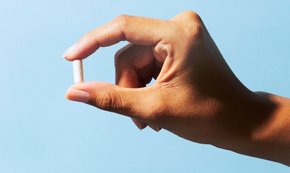Chronological Age vs Biological Age
Your chronological age is the number of years, months, and days since you were born. It’s the number of candles on your birthday cake.
But what if you are counting wrong? What if your chronological age is not the best indicator of your real age?
Your biological age is a better indicator of your physical condition.
Your biological age determines how old you are by the state of your physical condition. The idea is that not everyone accumulates damage to their cells and tissues at the same rate.
For example, Lebron James, a four-time NBA champion, is a 36-year old athlete. Most professional basketball players notice a physical decline in their mid-30s, but sports analysts argue that Lebron James is still playing like he’s in his late-20s.
Lebron James’ biological age is probably much younger than his chronological age due to his hyper-vigilance in diet, rest, and proper recovery.
On the other hand, a 36-year old chain smoker who averages two packs a day probably has a biological age that is much older. The inhalation of smoke causes damage to the cells faster than a healthy cell with typical environmental factors.
Measuring chronological age can lead to a false diagnosis of your current health status. Your biological age gives a better picture as it accounts for several lifestyle factors, including genetics, diet, exercise and sleep habits.
Telomeres help determine your biological age.
In each of your cells, you have telomeres—caps at the end of each strand of DNA. Telomeres protect our chromosomes, similar to the plastic or metal tips at the end of a shoelace.
Studies show that telomere length shortens with age.
A review published in Current Opinion in Clinical Nutrition and Metabolic Care outlines findings that associate shorter telomeres with increased mortality.
Telomere length dictates how quickly your cells age and die.
The author of the study, Massod A Shammas, states,
“Better choice of diet and activities has great potential to reduce the rate of telomere shortening or at least prevent excessive telomere attrition, leading to delayed onset of age-associated diseases and increased lifespan.”
How to calculate your biological age?
Scientists have not correlated telomere length to a specific age-range scale to calculate biological age directly.
But epigenetic clocks try their best, using mathematical models.
Epigenetic clocks use DNA methylation data as a biomarker for your biological age instead. DNA methylation is a control program in your body that turns genes “off.”
Steve Horvath, a geneticist and aging researcher, published the use of DNA methylation to determine biological age in the journal, Genome Biology.
Horvath concludes,
“DNA methylation age measures the cumulative effect of an epigenetic maintenance system. This novel epigenetic clock can be used to address a host of questions in developmental biology, cancer and aging research.”
However, there is still much left to the unknown when it comes to epigenetic clocks.
In the journal, Aging, Simon Ecker and Stephan Beck from University College London highlight,
“Despite providing the most accurate molecular biomarkers of age to date, it remains a mystery why exactly the epigenetic clocks work, and whether age-related changes in DNA methylation contribute to the cause of aging or are a result of it.”
Nevertheless, there are several consumer options to choose from to discover your biological age using this method, like the one from EpiAging USA.
There are nine hallmarks of aging.
Telomere damage and DNA methylation are the two most observed signs of your biological age because scientists can detect their decline and change over time.
However, aging is a complex biological process that involves much more.
Recent science shows that there are nine hallmarks of aging in different organisms, but particularly in mammals.
These nine hallmarks are:
genomic instability
telomere attrition
epigenetic alterations
loss of proteostasis
deregulated nutrient-sensing
mitochondrial dysfunction
cellular senescence
stem cell exhaustion
altered intracellular communication
A review published in Cell illustrates just how interconnected these hallmarks are to each other, where if one is affected, the other hallmarks may also be affected.
For example, mitochondrial dysfunction can lead to excess free radicals—unstable molecules that can cause cell damage.
An article published in Nature Structural & Molecular Biology indicates a direct correlation between an excess of free radicals to the shortening of telomeres, another hallmark of aging.
You can read more about the nine hallmarks of aging via the American Federation of Aging Research website.
Better to take action than measure your biological age.
Measuring your biological age is a nice-to-know metric. But what will you do with that knowledge?
There’s no need to spend your hard-earned money on expensive tests. The important thing is to reflect on the fact that there could be a significant difference between your chronological age and biological age. And healthy lifestyle habits can significantly impact your biological age, regardless of how young you are.
You can’t reverse your biological clock, but there are significant steps you can take to slow the effects of aging.
Take into consideration a more healthy aging lifestyle, incorporating a regular exercise routine and following a proper nutrition regimen. Resist harmful habits like poor diet, drinking, sedentary behavior, sleep deprivation, and long-term sun exposure. And consider healthy aging supplements like nicotinamide riboside.
Related Posts





Understanding the Aging Process





What Is Healthy Aging?










